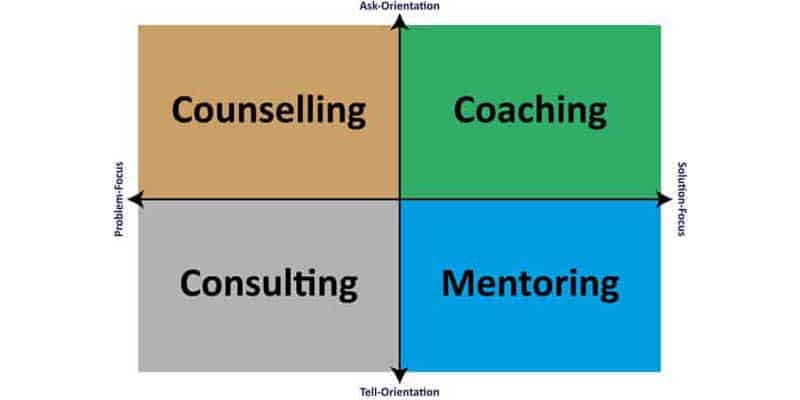Getting everyone on the same page about a company’s strategy can be tough. Many workers don’t know what their firm’s big plans are. This can lead to confusion and missed chances. Companies need clear ways to share their strategy with all staff.
Good strategy talk helps firms do better. It makes sure all parts of the company work together. When staff know the plan, they can make smarter choices in their work. This helps the whole company reach its goals faster.
There are many ways to spread the word about strategy. Bosses can give talks, send emails, or make videos. The key is to keep the message simple and repeat it often. It’s also smart to explain how each person’s job fits into the big picture.
Key Takeaways
- Clear strategy communication helps align all parts of a company
- Simple, repeated messages work best for sharing plans with staff
- Explaining how jobs connect to strategy helps employees understand their role
Understanding the Strategy Framework
A strategy framework provides structure and direction for a company’s goals and plans. It outlines key elements that guide decision-making and actions.
Essence of Strategic Planning
Strategic planning sets a path for a company’s future. It starts with defining the organization’s purpose and vision. These elements shape long-term goals and objectives.
A clear purpose explains why the company exists. It gives meaning to daily work. The vision paints a picture of future success. It motivates employees and guides choices.
Strategic goals flow from the purpose and vision. They are specific targets the company aims to reach. Goals might include market share, profit margins, or new product launches.
Components of a Comprehensive Strategy
A complete strategy has several parts working together. These pieces form a roadmap for success.
Key components include:
- Mission statement
- Core values
- SWOT analysis (Strengths, Weaknesses, Opportunities, Threats)
- Key performance indicators (KPIs)
- Action plans
The mission statement explains what the company does and for whom. Core values guide behavior and decision-making. A SWOT analysis helps identify internal and external factors affecting the business.
KPIs measure progress toward strategic goals. They provide data to track success. Action plans detail specific steps to reach goals. These plans assign tasks, set deadlines, and allocate resources.
Leadership’s Role in Strategy Communication
Leaders play a crucial part in sharing a company’s strategy. They set the tone and make sure everyone understands the plan.
Responsibilities of Leaders and Executives
Executives and CEOs must clearly explain the company’s strategy to all employees. They need to use simple words and give real examples.
Leaders should share the strategy often. They can do this in team meetings, company-wide emails, and one-on-one talks.
It’s important for leaders to listen to feedback. They should answer questions and address concerns about the strategy.
Leaders must also show how their own work fits the strategy. This helps others see how to apply it in their roles.
Incorporating Leadership Training
Companies can use leadership training to improve strategy communication. Programs like Harvard ManageMentor teach skills for sharing complex ideas.
Training can cover how to craft clear messages about strategy. It should also teach leaders to adjust their communication style for different groups.
Role-playing exercises help leaders practice talking about strategy. They can get feedback and improve their skills.
Good training includes lessons on using different communication channels. Leaders learn when to use emails, videos, or face-to-face talks.
Creating a Clear and Effective Communication Plan
A well-crafted communication plan helps companies share their strategy effectively. It outlines key messages, target audiences, and delivery methods. A good plan ensures everyone understands the company’s goals and direction.
Drafting the Communication Plan
The first step is to identify the main strategy points to convey. Break these down into clear, simple messages. Next, determine the target audiences, both internal and external. For each group, consider their needs and preferred communication channels.
Create a timeline for rolling out communications. This helps spread information in a logical order. Include deadlines for each message and audience.
Choose appropriate communication methods. These might include emails, meetings, videos, or social media posts. Match the method to the message and audience for best results.
Utilizing Templates and Tools
Communication plan templates can save time and ensure nothing is missed. Many online resources offer free templates to get started. These often include sections for goals, audiences, messages, and timelines.
Project management tools can help track the plan’s progress. They allow teams to assign tasks, set deadlines, and monitor completion. This keeps everyone on the same page.
Use data analytics to measure the plan’s success. Track metrics like email open rates or meeting attendance. This data helps improve future communication efforts.
Consider creating a central hub for all strategy-related information. This could be an intranet site or shared folder. It gives employees easy access to important details.
Aligning Teams with Strategic Priorities
Successful strategy execution depends on getting everyone in the organization working toward the same goals. Clear communication and employee engagement are key to aligning teams with strategic priorities.
Setting Expectations for Managers
Managers play a crucial role in aligning teams with company strategy. They must clearly understand strategic objectives and translate them into actionable steps for their teams.
Regular strategy meetings help keep managers informed. In these meetings, leadership should:
- Review key strategic priorities
- Explain how each department contributes
- Answer questions and clarify expectations
Managers need tools to track progress. Strategic dashboards or scorecards can help monitor key metrics tied to strategic goals.
It’s important for managers to have open communication channels with upper management. This allows them to quickly address issues that may hinder strategy execution.

Employee Engagement Techniques
Engaged employees are more likely to align their work with strategic priorities. Companies can use several techniques to boost engagement:
- Communicate strategy clearly and often
- Link individual goals to company objectives
- Recognize employees who advance strategic goals
- Provide training on skills needed for strategy execution
Town hall meetings allow leadership to share strategy updates directly with employees. Q&A sessions help address concerns and build buy-in.
Team-building activities centered around strategic themes can make the strategy more tangible for employees. For example, a company focusing on innovation might hold an “idea hackathon.”
Regular pulse surveys help gauge employees’ understanding of and alignment with the strategy. This feedback allows companies to adjust their communication and engagement efforts as needed.
Effective Internal Communications
Internal communications play a vital role in sharing a company’s strategy with employees. Clear messaging and two-way dialogue help ensure everyone understands and supports organizational goals.
Building a Robust Internal Communications Framework
A strong internal communications framework starts with leadership commitment. Executives must prioritize open and frequent communication about strategic priorities. This sets the tone for the entire organization.
Key elements include:
- Regular all-hands meetings
- Department-specific briefings
- Company-wide emails or newsletters
- An accessible intranet with strategy updates
Messages should be consistent across channels. Use simple language to explain how the strategy impacts day-to-day work.
Visual aids like infographics can make complex ideas easier to grasp. Short video messages from leaders add a personal touch.
Effective internal communication helps create a positive business climate. It keeps employees informed and engaged with company goals.
Feedback Mechanisms and Iteration
Two-way communication is crucial for successful strategy implementation. Companies must establish channels for employee feedback and questions.
Effective feedback methods include:
- Anonymous suggestion boxes
- Regular pulse surveys
- Town hall Q&A sessions
- Manager one-on-ones
Leaders should actively listen to concerns and ideas from all levels of the organization. This input can reveal blind spots or implementation challenges.
Be prepared to clarify and adjust messaging based on feedback. An efficient internal communication system allows for quick updates as the strategy evolves.
Track engagement metrics to gauge effectiveness. Low participation may signal a need to revise communication approaches. Continuously refine methods to ensure the strategy resonates throughout the company.
Contextualizing the Message for Different Audiences
Effective communication of company strategy requires tailoring the message to specific groups. This involves understanding the needs and perspectives of stakeholders and employees, and adapting the content accordingly.
Tailoring the Message for Stakeholders
Stakeholder audiences have diverse interests in a company’s strategy. Executive leaders must craft messages that resonate with each group.
For investors, focus on financial projections and market positioning. Highlight potential returns and growth opportunities.
When addressing customers, emphasize product improvements and service enhancements. Explain how the strategy will benefit them directly.
For regulatory bodies, stress compliance measures and ethical practices. Detail plans for responsible growth and community engagement.
Partners and suppliers need to understand their role in the strategy. Outline collaboration opportunities and mutual benefits.
Adapting Communication for the Workforce
Employees require clear, actionable information about the company’s direction. Contextualizing the message helps staff understand their part in achieving strategic goals.
Use simple language to explain complex concepts. Avoid jargon and technical terms that may confuse non-specialists.
Connect the strategy to daily work tasks. Show how individual efforts contribute to broader objectives.
Address potential concerns about job security or changes in roles. Provide reassurance and outline support measures.
Create opportunities for feedback and questions. This helps ensure the workforce fully grasps the strategy and feels involved.
Use visual aids like infographics or videos to illustrate key points. These can make the strategy more accessible and memorable.
The Importance of Leadership Buy-In
Leadership buy-in is key for successful strategy communication. When leaders fully support the strategy, it helps align the whole company and drive results.
Gaining Executive Support
To gain executive support, start by showing how the strategy links to business goals. Use data and clear metrics to prove the strategy’s value. Set up one-on-one meetings with key leaders to address their concerns.
Create a short, clear pitch that outlines the main benefits. Practice delivering it with confidence. Be ready to answer tough questions about risks and costs.
Involve executives early in the planning process. Ask for their input and ideas. This helps them feel ownership of the strategy. Give regular updates on progress and wins to keep leaders engaged.
Promoting an Enterprise Mindset
An enterprise mindset means thinking about what’s best for the whole company. Encourage leaders to look beyond their own teams or departments. Show how the strategy helps all parts of the business work better together.
Set up cross-team projects linked to the strategy. This gets people working across silos. Create shared goals that tie to the big picture—reward leaders who support company-wide efforts.
Use town halls and team meetings to stress unity. Share stories of teams working together to reach strategic goals. Build a common language around the strategy that all leaders use.
Monitoring Progress and Maintaining Motivation
Tracking progress and keeping teams motivated are key to successful strategy communication. Regular check-ins and clear metrics help teams stay on track. Sharing updates and celebrating wins boosts morale and engagement.
Tracking Performance Indicators
Companies need clear ways to measure progress in their strategy. Key performance indicators (KPIs) are useful tools for this. Good KPIs are:
• Specific and measurable
• Aligned with strategic goals
• Tracked regularly
A balanced scorecard can help track KPIs across different areas. This gives a full picture of performance.
Visual dashboards make it easy to see progress at a glance. Graphs and charts show trends over time. Color coding highlights areas needing attention.
Regular review meetings keep everyone up to date. Leaders can spot issues early and adjust course if needed.
Keeping Teams Motivated and Informed
Clear, frequent updates help teams stay motivated. Leaders should share both successes and challenges. This builds trust and keeps everyone aligned.
Some effective ways to keep teams informed:
• Weekly email updates
• Monthly town hall meetings
• Team dashboards
Celebrating small wins boosts morale. Public recognition for good work reinforces desired behaviors. This can be as simple as shout-outs in team meetings.
Connecting daily work to bigger goals helps motivation. Show teams how their efforts contribute to company strategy. This gives work more meaning.
Encouraging open discussion builds engagement. Create safe spaces for teams to share ideas and concerns. This can spark innovation and surface hidden issues.
Utilizing Diverse Communication Channels
Companies need to use different ways to share their strategy. This helps reach all employees and stakeholders. It also makes sure the message is clear and understood.
Choosing the Right Channels
Picking the best ways to share a company’s strategy is key. Emails work well for quick updates. In-person meetings allow for questions and talks. Video calls help remote teams stay in the loop.
Social media platforms can spread the message to a wide group. Company blogs give space for deep dives into strategy topics.
Teams should think about who needs to know what. Then they can pick the best way to reach each group. Some staff might prefer text messages. Others may like printed reports.
Balancing Digital and Traditional Media
Using both new and old ways to share info works best. Digital tools are fast and can reach many people at once. But face-to-face talks still matter for big news.
Company websites can host strategy docs for easy access. Printed memos or posters can catch eyes in the office.
Online chats allow quick Q&As. Town halls let leaders speak to many staff at once. A mix of methods helps make sure everyone gets and understands the message.
Online leadership training can teach managers how to share strategy well. This helps create a steady flow of clear info across the company.
Crisis Communication as a Strategic Edge
A strong crisis communication plan gives companies an advantage when facing challenges. Quick, clear messaging helps maintain trust and control during difficult times.
Preparing a Crisis Communication Plan
A crisis communications plan outlines how a company will respond to emergencies. It should include:
• Key team members and their roles
• Pre-approved message templates
• Communication channels to use
• Steps for assessing the situation
Leaders need to practice the plan regularly. This ensures everyone knows what to do when a real crisis hits.
The plan should cover various crisis scenarios. It must also detail how to use different media, including social platforms.
Updating the plan yearly keeps it relevant. New risks and communication tools emerge often.
Relevance of Communication in Times of Crisis
Clear communication is vital during a crisis. It helps:
• Calm stakeholders’ fears
• Prevent rumors and misinformation
• Show the company is in control
• Protect the brand’s reputation
Leaders should communicate early and often. Silence can make a bad situation worse.
Choosing the right response strategy is crucial. Companies must balance transparency with legal concerns.
Internal communication is just as important. Keeping employees informed helps maintain morale and productivity.
Consistent messaging across all channels is key. It builds trust and credibility during uncertain times.
Action Plan and Implementation
Turning strategy into real-world results requires a clear plan and effective communication. Companies need to break down big ideas into actionable steps and get everyone on board.
Translating Strategy into Action
An action plan turns broad goals into concrete tasks. It lists specific steps, deadlines, and who’s responsible. Good action plans link directly to the company’s strategy. They focus on key priorities and avoid getting bogged down in minor details.
Managers should set measurable targets. This helps track progress. For example, “Increase sales by 10% in Q3” is better than “Boost revenue.”
Breaking big projects into smaller chunks makes them less daunting. A timeline with milestones keeps everyone on track. Regular check-ins help spot and fix problems early.
Leveraging Communication as a Catalyst
Clear communication speeds up strategy rollout. Leaders need to explain the “why” behind changes, not just the “what.” This builds buy-in across the organization.
Companies that communicate strategy well see better results. They use multiple channels – meetings, emails, videos, and more. The message stays consistent, but the format changes to reach different groups.
Feedback loops are crucial. They let employees ask questions and share concerns. This two-way communication helps refine the strategy and catch potential issues early on.



